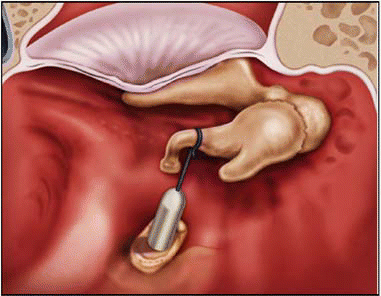Be careful not to be too quick to say that a patient’s problems are due to canal dehiscence. A study using CT to determine the prevalence of superior and posterior semicircular canal dehiscence in a patient population in Boston calculated the prevalence of superior canal dehiscence; although the result was similar to those from previous investigations (about 9%), this study shows there is a twist-the rate of posterior canal dehiscence may be lower than previously reported.
Explore This Issue
September 2008Previously published studies were in general, large sample size populations but they did not employ sub-millimeter technique. We aren’t aware of any investigations employing sub-millimeter technique in evaluating the posterior semicircular canal, said Rohini Nadgir, MD, Assistant Professor of Radiology at the Boston University School of Medicine, who spoke at a Triological Society session at the Combined Otolaryngology Spring Meeting.
In this retrospective study, researchers reviewed CT scans from patients who had undergone temporal bone CT scans for a variety of clinical indications between July 2005 and March 2007. Scans were done using a sub-millimeter technique to evaluate the integrity of the superior and posterior semicircular canals. The scans were performed on a 64 detector row CT scanner using 0.625-mm slice thickness, in bone plus algorithm without contrast. A review was also done of 0.3-mm interval reconstructions in the coronal and sagittal planes.
The images were reviewed by two neuro-radiologists who rated the superior and posterior canals as normal, thin, or dehiscent. Clinically relevant data were reviewed by an otolaryngologic surgeon who was blinded to the interpretations of the CT. Radiographic results were correlated to the clinical findings.

Images from 454 temporal bones from 226 patients were reviewed. Of these, 19 (9%) patients were found to have dehiscence of the superior semicircular canal. Intriguingly, of these patients, none had supportive clinical evidence of the syndrome, she said. Two patients were identified as having posterior canal dehiscence, and they didn’t have clinical signs either.
Ironically, through the chart review, five patients had an initial clinical suspicion of canal dehiscence, but none had supportive radiographic evidence. The patients were found to have other explanations for their symptoms, including benign positional vertigo, endolymphatic hydrops, cholesteatoma, and otosclerosis.
Overall, the findings confirmed the same rate of superior canal dehiscence as previous studies; however, the rate of posterior canal dehiscence was much lower than published rates.
Leave a Reply